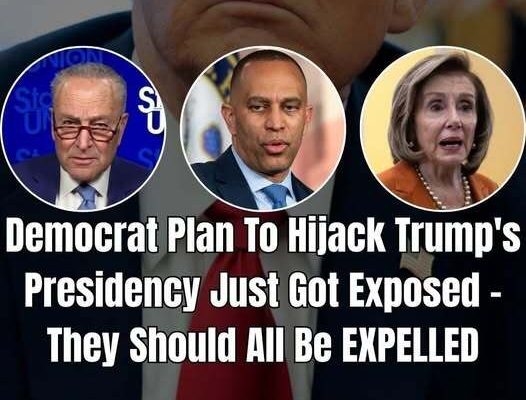In Washington, negotiations to avert a government shutdown have entered their most precarious phase yet. What began as routine budget talks has escalated into a high-stakes political standoff, drawing national scrutiny and intensifying partisan debate.
The discussions—bringing together Republican and Democratic leaders—were supposed to continue throughout the week. But hopes for a last-minute compromise dimmed after a series of heated exchanges that left both sides accusing the other of intransigence. With neither party willing to shoulder blame, the path toward resolution has become increasingly fraught.
Vice President J.D. Vance has been particularly candid about the scale of the challenge. Speaking to reporters, he warned that a shutdown was becoming “increasingly likely” unless negotiators made swift and meaningful progress. His remarks reflected growing frustration inside the administration, which has repeatedly stressed the importance of maintaining uninterrupted government operations.
House Speaker Mike Johnson has also taken to the podium in recent days, insisting that Republicans are fighting for what he described as “reasonable and responsible” budget reforms. He argued that federal spending had reached unsustainable levels and said his caucus remained committed to a balanced fiscal approach.
Democratic leaders forcefully rejected that characterization. They maintained that they had offered multiple pathways to avoid a shutdown, only to be met with what they viewed as unrealistic demands from the Republican side. They argued that if the government shutters, the responsibility would rest with GOP leadership, not with Democrats who say they are working to keep federal services intact.
As tensions mounted, both parties intensified their public messaging efforts. Republicans accused Democrats of political brinkmanship, suggesting they were leveraging the threat of a shutdown to strengthen their negotiating position. Democrats countered by accusing Republicans of mismanaging the budget process and pushing the country toward unnecessary disruption.
Observers noted that political brinkmanship of this sort is hardly unusual during periods of divided government. Yet the tone of the past several days has revealed deeper disagreements over core spending priorities, federal programs, and long-term economic strategy.
Behind the scenes, negotiators continued searching for common ground. Staffers from both parties met repeatedly to examine proposals, explore stopgap alternatives, and determine whether a short-term funding measure might keep the government open while larger disputes are hashed out.
So far, though, those efforts have not yielded a breakthrough. Officials close to the discussions described the atmosphere as tense but not irreparable, noting that many budget agreements in years past have materialized only under the pressure of an imminent deadline.
Outside the Capitol, concerns were mounting. Federal employees, service members, and contractors braced for the possibility of missed paychecks. Families wondered what a shutdown might mean for national parks, passport processing, and a host of everyday services.
Economists cautioned that even a short shutdown could ripple through the broader economy, shaking consumer confidence, delaying projects, and widening public skepticism about Washington’s ability to govern effectively.
Advocacy groups urged lawmakers to move quickly. Nonprofits and community organizations—many of which rely on federal partnerships—warned that a prolonged lapse in funding could interrupt essential programs and harm vulnerable populations.
Vice President Vance reminded both parties that their shared responsibility was to protect the public interest. He emphasized the importance of keeping the government functional and urged lawmakers to avoid any “unnecessary disruptions.”
Speaker Johnson echoed that sentiment, though he reiterated his expectation that Democrats return to the negotiating table with “serious budget reform” in mind. His office stressed that Republicans were prepared to compromise but would not support spending levels they viewed as excessive.
Democratic leaders, meanwhile, insisted their proposals reflect practical needs across the country. They argued that some Republican demands would impose severe cuts on crucial services and disproportionately hurt working families.
Political analysts noted that the impasse underscores a broader ideological divide: Republicans are focused heavily on reducing federal spending and addressing long-term debt, while Democrats prioritize maintaining funding for social programs, public services, and administrative stability.
As public pressure intensified, leaders on both sides signaled that talks were far from over. In late-evening statements, negotiators acknowledged that time was short but said they still hoped cooperation could prevail.
The mounting uncertainty created an urgent atmosphere throughout Washington. Committee chairs, senior aides, and policy strategists worked nonstop to craft proposals capable of bridging the divide.
Meanwhile, the media landscape was consumed with coverage of the unfolding standoff. News outlets aired constant updates, interviews with lawmakers, and analyses of the political stakes, as Americans across the country watched for signs of progress.
Despite increasingly combative rhetoric, some lawmakers urged calm. They reminded the public that budget negotiations have a long history of appearing hopeless before an agreement materializes—often in the final hours.
Still, frustration continued to build. Constituents pressed their elected officials to resolve the crisis, questioning why political differences had once again brought the country to the brink of a shutdown. Many voters voiced disappointment that Washington had allowed routine budget talks to spiral into a national concern.
As the deadline approached, hopes centered on whether both parties could set aside political posturing long enough to reach a workable compromise. Lawmakers on both sides acknowledged the high stakes and the consequences of failure.
For now, the situation remains in flux. Negotiations are ongoing, multiple proposals are on the table, and no final agreement has emerged.
With each passing hour, pressure is rising. Federal agencies are preparing contingency plans, and communities nationwide are bracing for service disruptions.
Even so, lawmakers maintain that a resolution is still possible—if both sides demonstrate the flexibility needed to break the impasse. They continue to urge one another, and the country, to keep patience as they work toward a solution.
As negotiations stretch on, the nation waits for clarity. Whether the government stays open will depend entirely on whether leaders can come together in the final hours and prevent yet another chapter of political instability.

